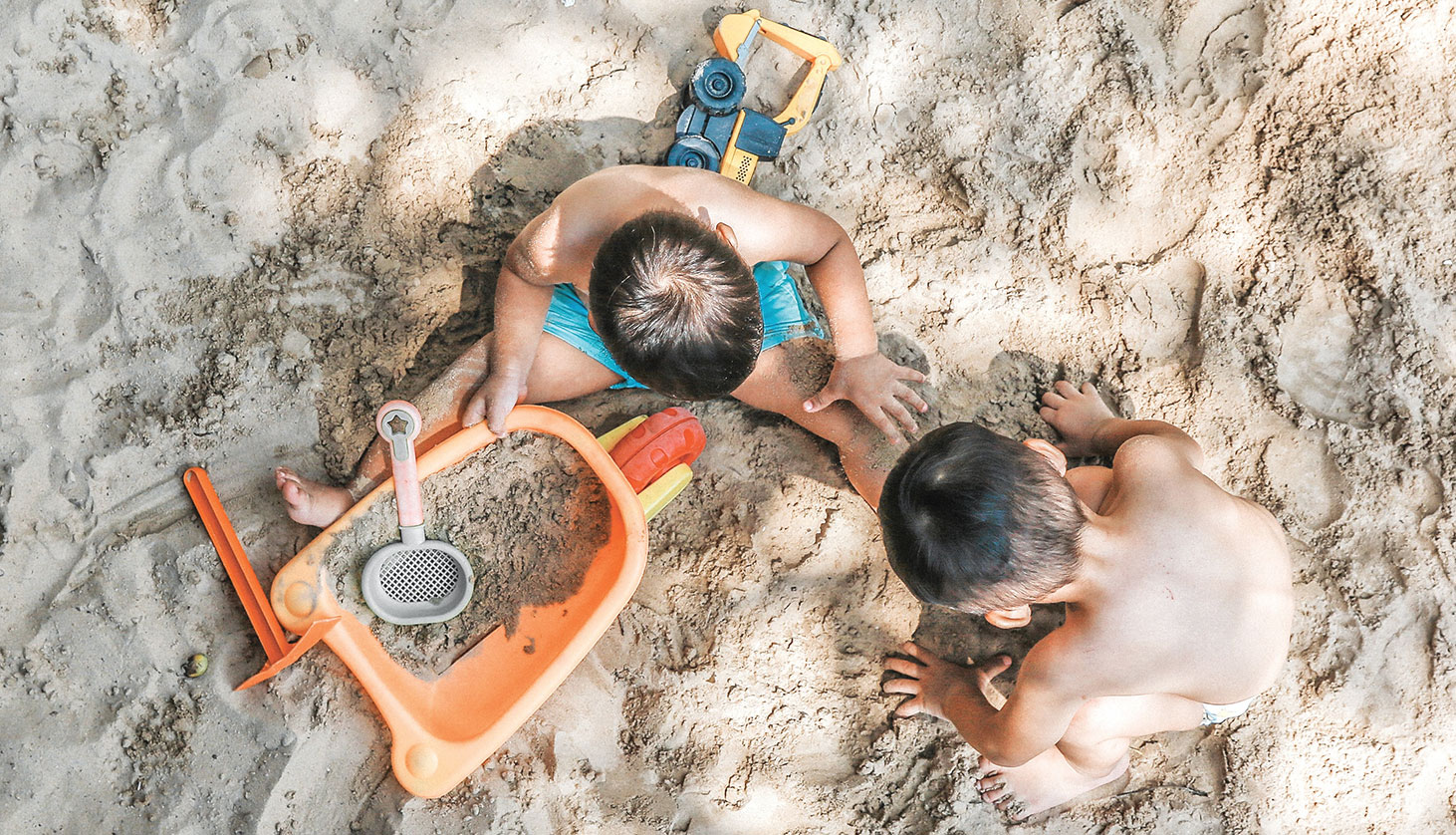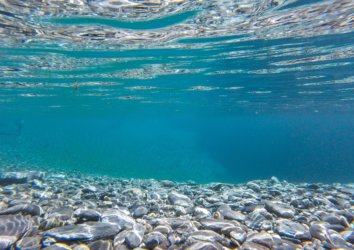This school year is a little different for all of us — whether you’re homeschooling your kids for the first time, helping the kiddos with distance learning or navigating the waves of hybrid learning.
On top of it all, many families are still spending most of their time at home.
Having the kids home more than usual, especially during the school year, makes it tough to find new things to do together. That’s why we put together some fun ocean activities for you and your kids to enjoy. These ocean-themed games are a great way to keep your kids entertained while learning and practicing important skills.
Busy moms rejoice! Most of the ideas listed below don’t need a lot of supplies or prep time beyond printing out our printables. Take a look at our ocean activities below.
Table of Contents
Ocean Activities for Preschoolers
Preschoolers are incredibly creative and love to learn! They may not get concepts right away, but it’s important to be patient and help them understand what they’re learning while they’re going through these activities. Below, we have a few activities that are great for building early skills with young learners.
Ocean Patterns
Preschoolers can begin learning patterns and may recognize them without realizing it! Ordering toys based on color or size is one way preschoolers demonstrate their understanding of patterns. Clapping along to music is another way younger kids interpret patterns.
For this exercise, kids will practice their pattern recognition skills by finishing a sequence of sea creatures! You’ll need our worksheet, scissors and tape or glue. Print out the worksheet and explain to your child that they’ll need to pick the right sea friend to complete the pattern.
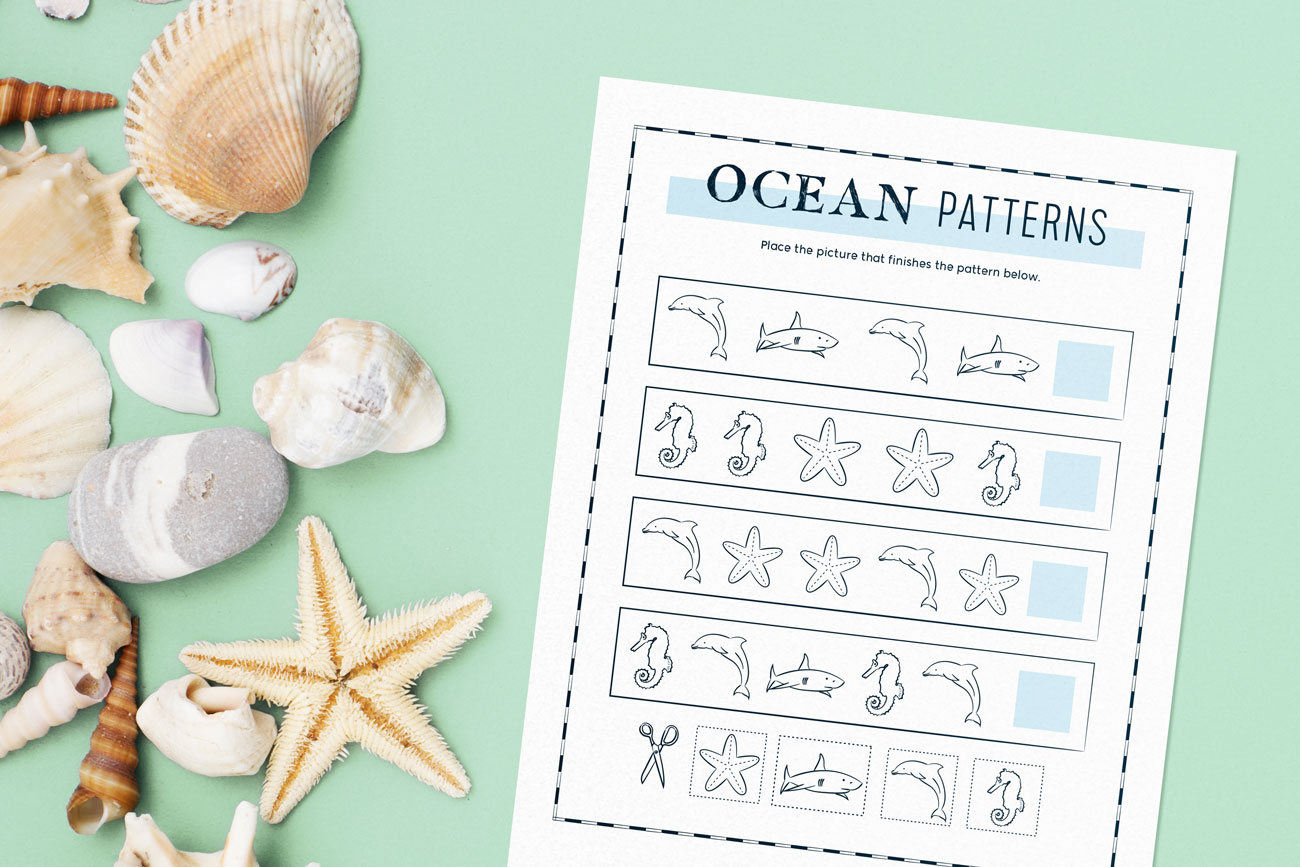

For ages: 3-4
Learning objectives
- Identify and complete a pattern.
Skills used:
- Pattern recognition
- Visual thinking
- Critical thinking
Sea Friend Connect the Dots
Most of us have done a connect-the dot-puzzle before, but did you know that connecting the dots is a math activity? Kids practice counting and number-order when they complete a connect-the-dot puzzle. These puzzles are also great for younger kids who are still developing their fine motor skills and hand-eye coordination.
Below, we have a fun connect-the-dot puzzle any kid will enjoy! Print out the sheet and have your little one start at “1.” Follow the numbers to uncover the mystery sea friend waiting to say hello! You can also use this as a coloring sheet.
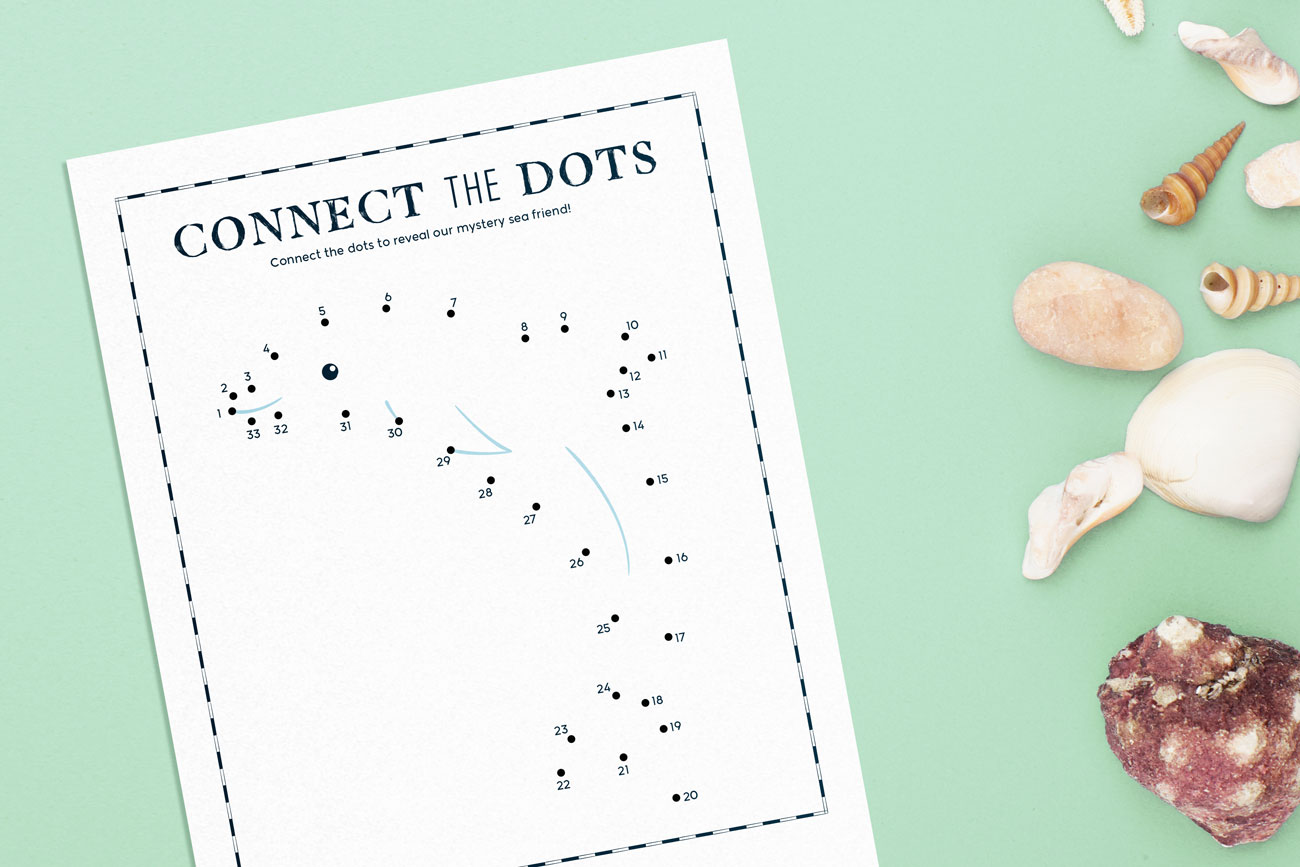

For ages: 3-4
Learning objectives
- Count numbers in order.
Skills used:
- Counting
- Sequencing
- Number sense
- Hand-eye coordination
- Fine motor skills
Freeze Dance Under the Sea
Freeze dance is a favorite game for teachers and parents! Kids get to have fun and adults have an easy way to use up their little ones’ energy. You probably didn’t know that freeze dance is a practical way to teach self-regulation, too! Self-regulation is a person’s ability to manage behavior and emotions based on their current situation.
Playing freeze dance every day won’t automatically teach kids to manage themselves. However, this game is a low-stakes way for them to understand that our behavior sometimes needs to change depending on the environment we’re in.
To put a seaworthy twist to the game, play ocean-themed music and dance like your favorite ocean animals! Shimmy like a fish or jiggle like a jellyfish. You can find lots of free, kid-friendly music online.
For ages: 3-4
Learning objectives
- Practice self regulation in a low-stakes environment.
Skills used:
- Self-regulation
- Listening
- Gross motor skills
Ocean Activities for Kindergarteners to Second Graders
Kids around this age can take on activities that require some critical thinking and build on skills they’ve learned as toddlers. Below, we’ve listed a few ocean-themed games that are a little more challenging!
Seashell Collecting Sequencing
Sequencing is the ability to arrange information in a certain order. We use sequencing when we’re cooking, starting the car or telling a story. For programming, a sequence is a set of steps done in a specific order. Programmers need to lay out specific instructions to achieve an action. They cannot miss a step or else the program will not work!
At this age, most kids understand the concept of sequencing. We’ll use this activity to see how well they understand sequencing from a programmer’s point of view.
Kids will write down directions for collecting seashells at the beach. If you don’t live near the beach, you can opt to collect items that are closer to home, like rocks in your backyard or loose change you place around the house.
It’s important for kids to write down each step in the process. Once they’re done, they will have someone else follow their instructions exactly. You’ll likely find that your kid’s might’ve missed a step or two. For example, they might have told you to pick up the shell, but didn’t tell you to put it in your bucket or bag before picking up the next one.
This teaches them the concept of sequencing and the types of challenges programmers need to solve every day! You can repeat this exercise with other simple activities like opening the door or making a sandwich.
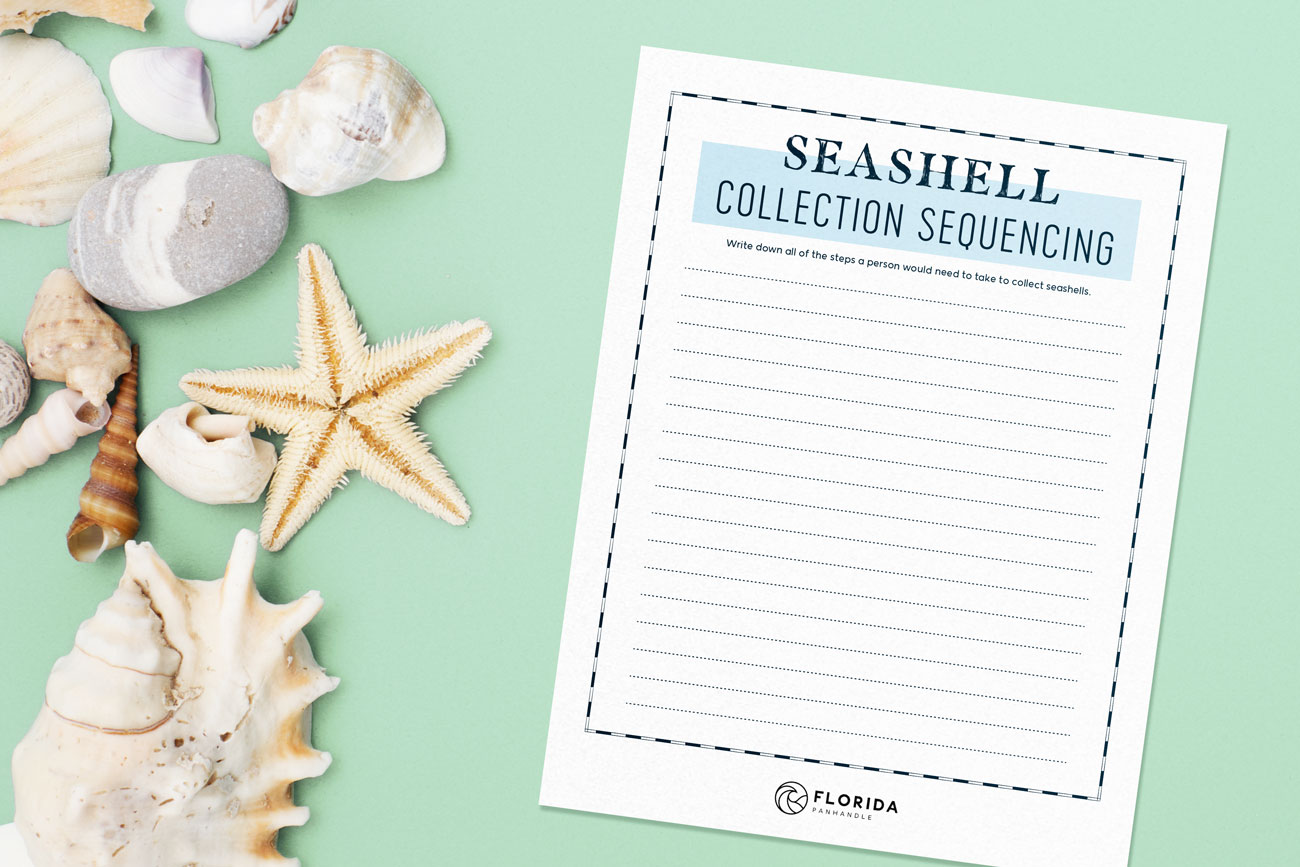

For ages: 5-8
Learning objectives
- Write a complete set of instructions in the correct order to accomplish a goal.
Skills used:
- Sequencing
- Critical thinking
- Working memory
Ocean Creature Symmetry
Learning symmetry at a young age helps kids understand the influence of math in their everyday lives. It can also help them understand concepts like patterns and shapes. Symmetry is used in many disciplines, ranging from art and music to math and science.
Kids will put their understanding of symmetry to the test by using shapes and lines to draw a mirrored image of an ocean creature. Just print out the worksheet and ask kids to use both the left half of the page and the grid to draw the animal’s right side.
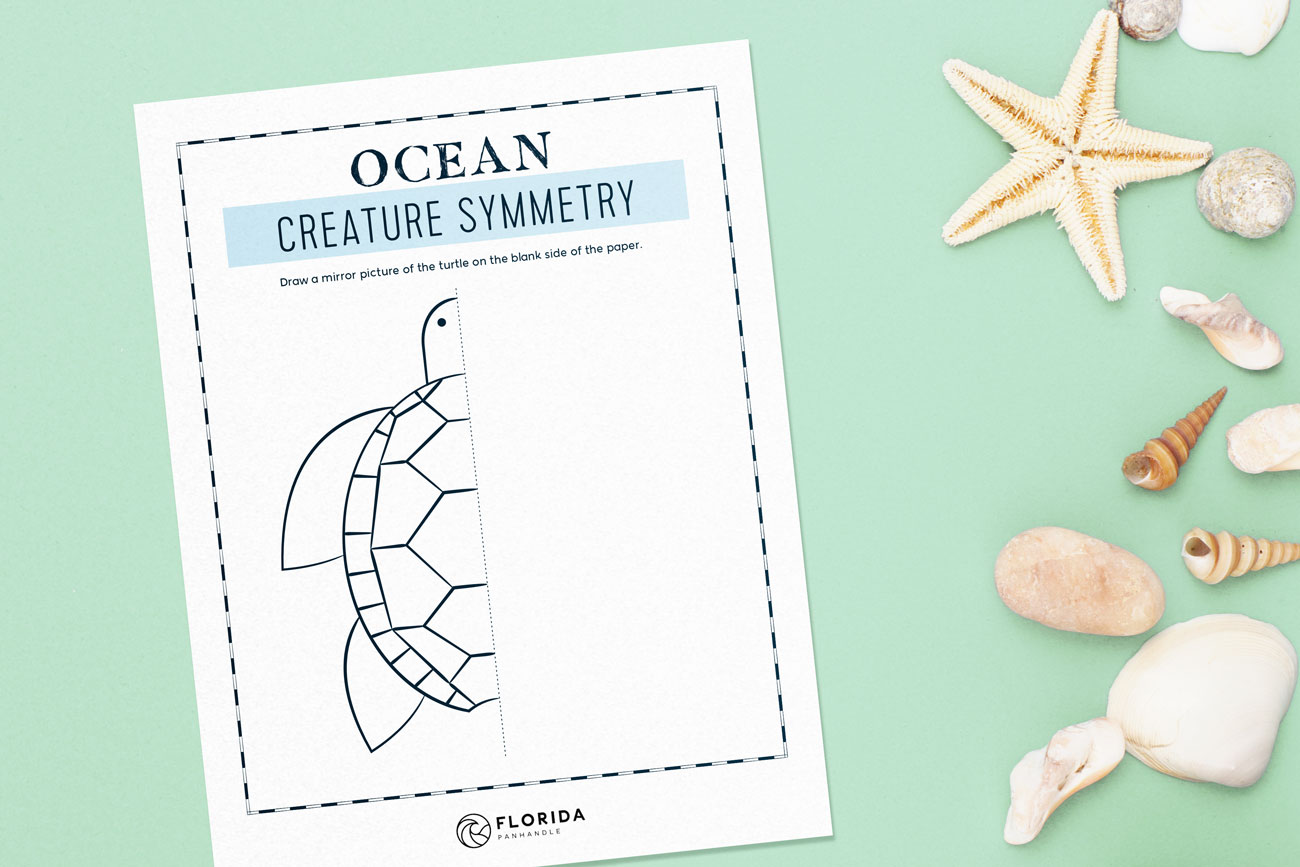

For ages: 5-8
Learning objectives
- Recognize symmetry in real-life objects.
- Create objects that have symmetry.
Skills used:
- Visualization
- Spatial memory
- Hand-eye coordination
One Wacky Day at Sea
Fill-in-the blank stories are a popular game where you blindly come up with words to create a hilarious story! This game is also an entertaining way to practice using different word types and constructing complex sentences.
Use a pencil with one sheet or print out two of our worksheets for this activity. Start the activity by asking your child for different words to fill in the blanks. Then, read the story together. It’ll probably sound ridiculous! Next, give your child a chance to update the story with words that make sense. Then, read the story again together and enjoy the story your child came up with.
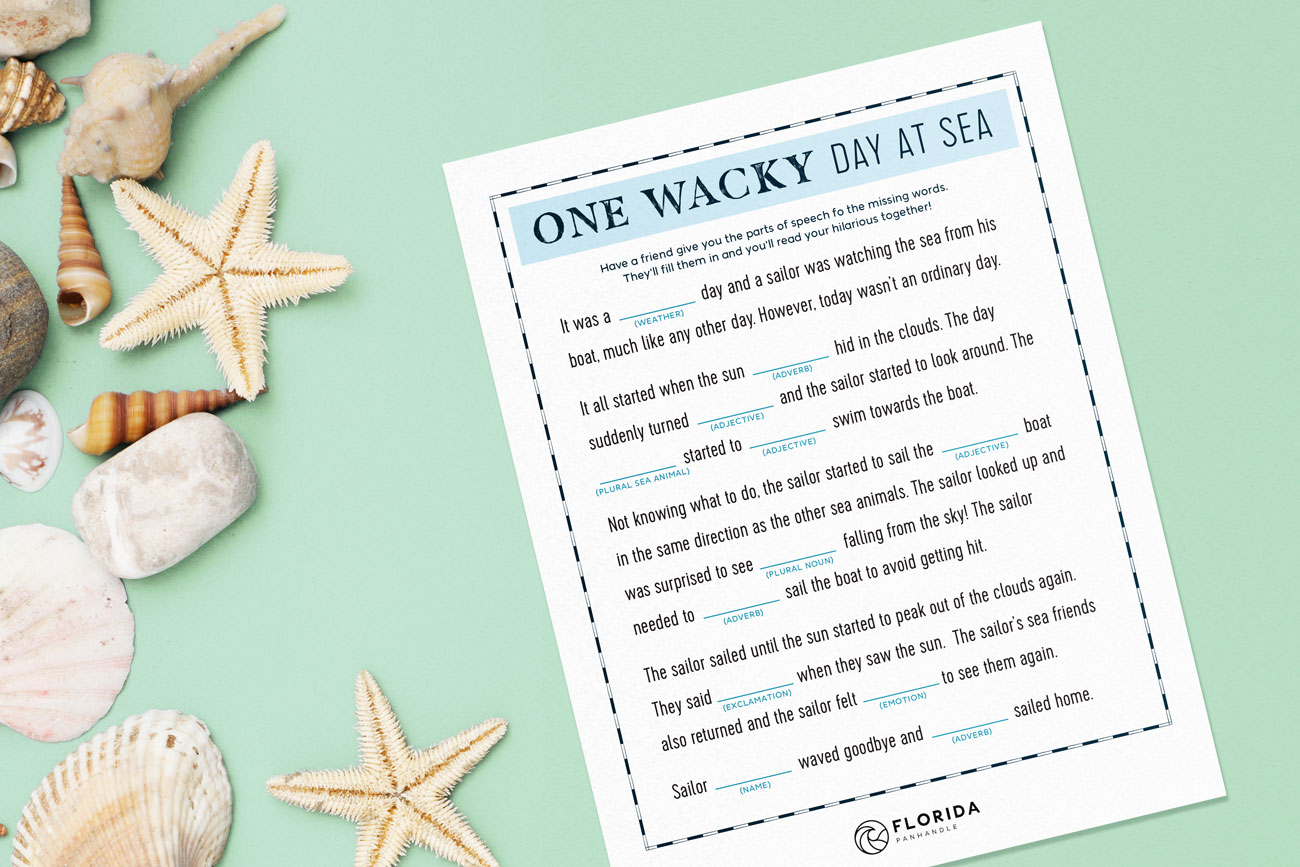

For ages: 5-8
Learning objectives
- Use different word types to complete a story.
- Understand the concept of context within a story.
Skills used:
- Listening
- Reading
- Creative writing
- Grammar
- Critical reading
Seaside Maze
Kids probably get a lot of maze handouts at school and at home. For this activity, they’ll get to make their own maze! Start them off with a prompt: there’s a fish who needs to get back home.
Now, it’s their turn to do whatever they want! They can create a maze on a piece of paper or build one if you have materials at home. Tape on the floor or paper in a shoe box lid are a few creative ideas they can try for their maze.
Before they get started, clearly mark the beginning of the maze and know they should test out the maze to make sure they can reach the end!
For ages: 5-8
Learning objectives
- Create a maze with a beginning and end point.
Skills used:
- Problem solving
- Critical thinking
- Visual motor integration
- Visual attention
Ocean Activities for Kids in Third to Fifth Grade
Older kids around ages nine to 11 can handle complex tasks that combine multiple skills in one activity. Take a look at our ocean activities for big kids below.
Ocean Observations
Observation is an important skill scientists use when they’re going through the scientific method in their experiments. Scientists observe when they’re conducting experiments and testing hypotheses.
In this activity, you will work with your child to come up with and discuss observations on animals and sea life in an aquarium. A few famous aquariums have live streams of their animals, like the Monterey Bay Aquarium Live Cams and Aquarium of the Pacific Webcams. You may need to pick a few aquariums in case animals aren’t awake or active in the first one you pick.
In addition to access aquarium live streams, you’ll need a writing utensil and our printable. Follow the steps below for this activity.
- Explain the activity to them and what they’re going to observe. Encourage them to look at things beyond size, shape and color. For example, do the fish tend to group together in one spot? Is there a lot of coral in the area? How much light is in the aquarium?
- Turn on the live stream and give them about five minutes to observe and write down their thoughts. You should also spend some time looking at the live stream to see if there’s anything interesting you can point out later. You will discuss these observations later on in this activity.
- After five minutes is up, prompt them to write down questions they have based on what they saw. You should also think of a couple questions.
- Have your child discuss their observations with you and share what you saw. Let them explain what they saw first, then point out other things they might also find interesting.
- Next, talk about the questions you both had. If they don’t already explain, ask them what they observed that prompted their question.
- Make a few predictions for your questions. There are no right or wrong answers! The important part is that they’re using critical thinking skills to think of logical answers.
- Finally, talk about ways you could find answers to those questions. Answers could be found with experiments or more research through books and videos. Depending on the complexity, you can let your child do some research to find these answers!
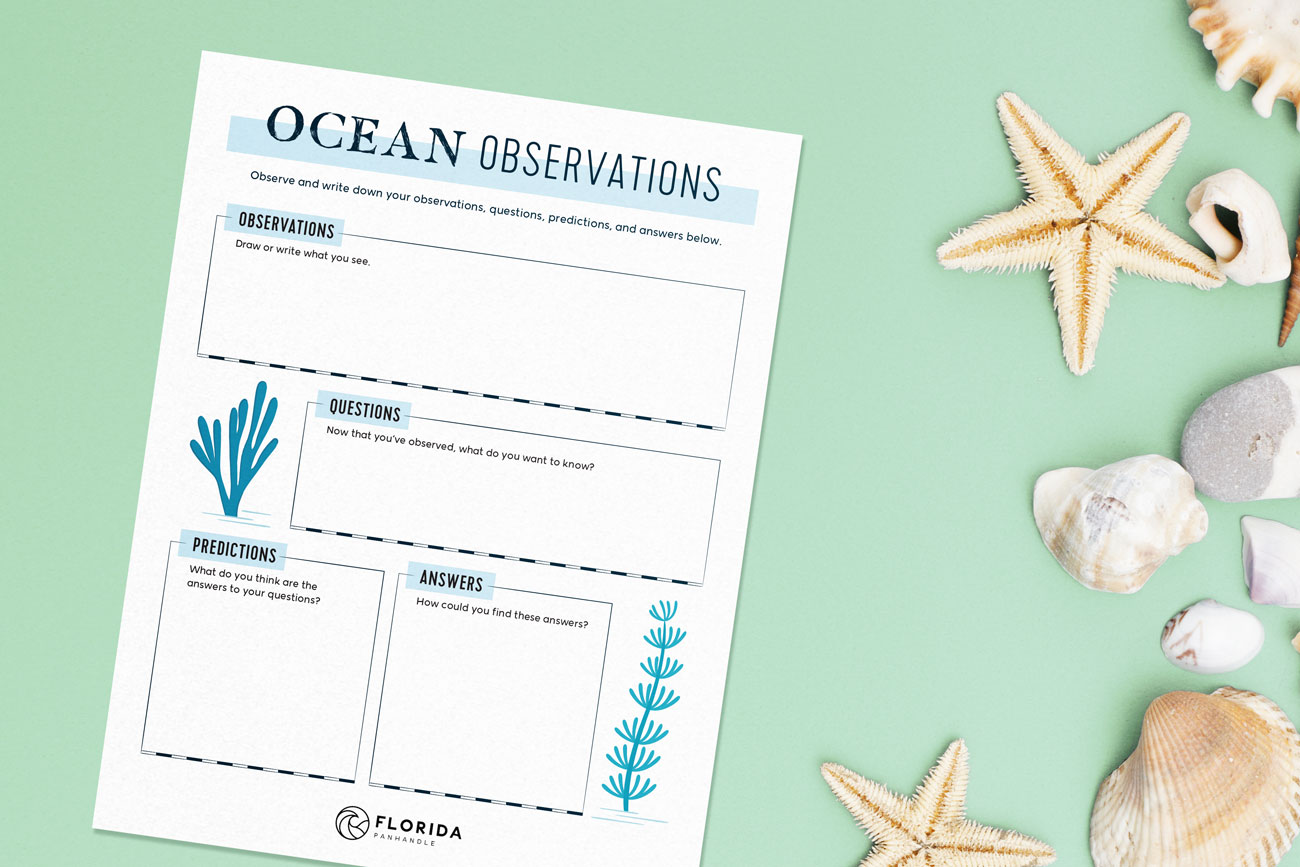

For ages: 9-11
Learning objectives
- Express scientific observations by writing or drawing.
- Draw inferences based on observations.
Skills used:
- Observation
- Critical thinking
Treasure Map Making
Most of us rely on apps and smart assistants to get us from point “A” to point “B.” However, understanding old-fashioned maps and how they work is still a valuable skill for kids (and adults!) to understand.
Maps are also a great way for kids to develop spatial thinking and understand size and distance in relation to other things. Understanding maps and your relative location is also a practical skill to have when technology fails or is not available and you need to use your brain to get to your destination!
In this activity, kids will make their own pirate treasure map of a small area like your backyard or a nearby park. You’ll need paper, colors, a writing utensil, laminator or plastic sheet protectors or a dry erase sleeve and a compass. Follow these instructions for this activity.
- Find an example map to learn the basics. You can search online for kid-friendly maps. You can even use Google Maps or another map app for a simple example.
- Go over typical symbols used on a map. Talk about symbols for things like trees, houses, mountains and stores. You should also point out the map key and explain how it’s used.
- Go over cardinal directions on the compass. Explain how the compass always points north and that you can use a compass along with a map to find your way. You can use a physical compass or download a compass app.
- Pick a spot to map. You can pick a local park, the beach or your own backyard.
- Walk around the mapping area. Point out potential landmarks and other areas to include on the map.
- Let your child draw their own map of the area. Make sure they include a map key and a spot for cardinal directions.
- Laminate or cover the map. You’ll be reusing the map a few times. Laminating allows you to write and erase as needed. You can also use plastic sheet protectors, zip-top bags or dry erase sleeves. Alternatively, you can photocopy and print a few more maps if you’re at home.
- Hide the treasure. This is the fun part! After the maps are made, you’ll hide the treasure and mark it on the map. Then, your kids will need to use the map they made to find the treasure!
- Have them hide the treasure. After they find the treasure, it’s their turn to hide it from you! They’ll need to hide the treasure and correctly mark the spot on the map.


For ages: 9-11
Learning objectives:
- Create an accurate map of a small area.
- Learn the cardinal directions in relation to your current area.
- Use a compass to find the cardinal directions.
Skills Used:
- Spatial thinking
- Navigation
A Day at the Beach
This activity is simple. Ask your child to write about a day at the beach. However, they’ll need to be descriptive and use their fives senses to describe the scene they see in their mind. This challenges kids to learn how to show, rather than tell about an experience.
This skill is important as they continue in their academic career and in their adult life. Showing rather than telling is important for complex papers, scholarship applications and job interviews!
For now, we can start with a nice day at the beach. You can play ocean white noise in the background to help them visualize their beach day or take them to your local beach for inspiration. To practice more of their writing skills, you can have them send their story on a postcard or letter to a loved one.
For ages: 9-11
Learning objectives:
- Write a story with descriptive language.
Skills Used:
- Creative writing
- Visualization

Using themed games like ocean activities are a great way to help kids develop different skills while having lots of fun! Getting outside and observing the ocean and sea life in person opens up new possibilities for learning. If you don’t live near the ocean, you should take advantage of the educational opportunities of the sea the next time you take a beach vacation.

